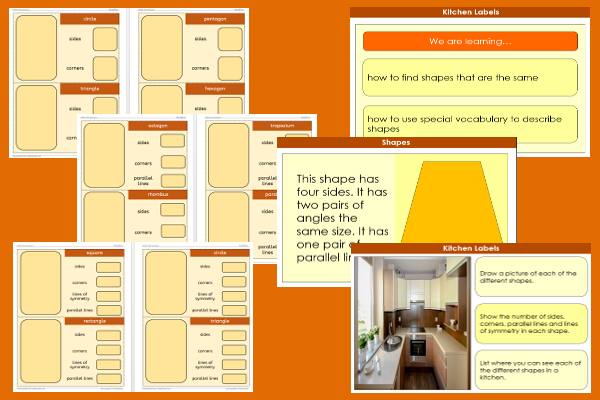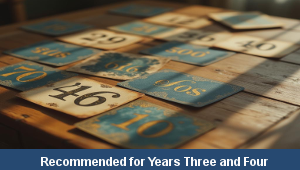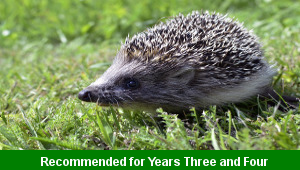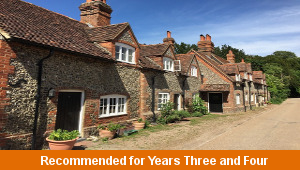Home > Key Stage Two > Maths > Geometry > 2D Shapes > Kitchen Shapes
Kitchen Labels

This maths teaching pack for Key Stage Two gets the children to select and record different shapes that might be seen in a kitchen by their matching properties including sides, corners, lines of symmetry and parallel lines.
The class can identify special vocabulary words that can be used to describe different 2D shapes seen in a kitchen such as cupboards, flooring and labels on food items.
Download this teaching pack including classroom activities and an interactive presentation to select and record different shapes that might be seen in a kitchen by their matching properties including sides, corners, lines of symmetry and parallel lines
Activities in this teaching pack include differentiated worksheets to select and record a range of different shapes by their properties including sides and corners for support ability levels, sides, corners and parallel lines for core ability levels and sides, corners, parallel lines and lines of symmetry for extension ability levels.
The interactive presentation gets the children to explore and and record different shapes by their matching properties including sides, corners, lines of symmetry and parallel lines.
This lesson is part of a maths scheme of work to get the children to identify, describe and compare some of the special shapes that might be seen in a kitchen by their matching individual properties. There are teaching activities for shared learning, differentiated worksheets to support independent learning and interactive presentations to introduce concepts and key skills.
-

Rounding Hundreds
Explain and model how to round some different numbers to the nearest hundred based on the place values of the digits in each number
-

Rounding Tens
Identify and record how to round some different numbers to the nearest ten based on the place values of the digits in each number
-

Classic Animal Stories
Investigate the structure and content of classic works of fiction by significant authors with animals as the main characters
-

Cities, Towns and Villages
Research and present the history of a range of different buildings and people that are part of the local community using a school exhibition
